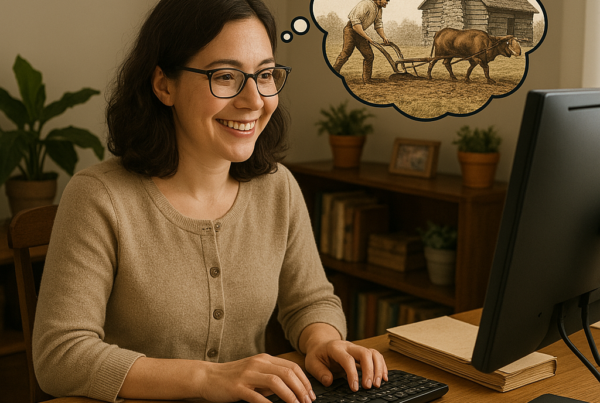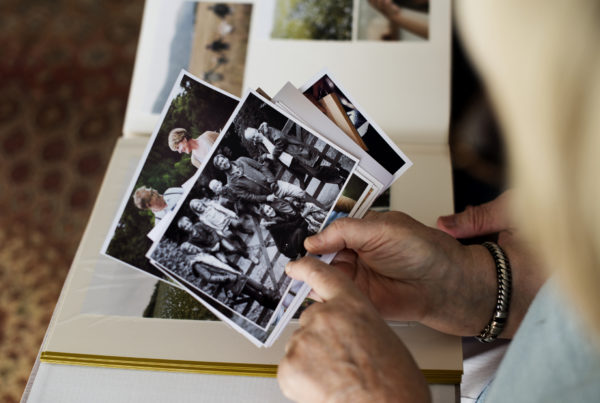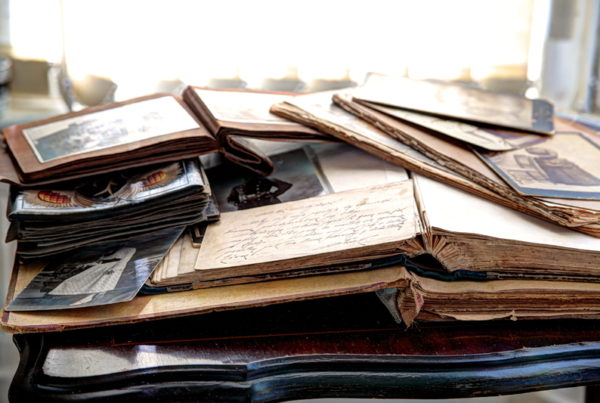Stories are powerful and telling your family story can have a great impact on your life. Reaching back into our family’s history helps us to build our own story and to make sure that our descendants will be telling them into the future. Your family history does matter.
Where to start?
With each post in this Basics’ Series, I’ll be adding a different project to work on that will help to guide you in your own journey. This is meant to be fun, so I’m going make it as easy and non-stressful as I can. If you have never done family history research, you are in the right place, so jump in wherever you are in your own research and join me! (If this isn’t your first rodeo working on your family history, please feel free to share your own tips and inspirational stories!)
We’ve all seen family trees before so let’s think of this journey in the shape of those family trees: starting down at the bottom with ourselves! It is a safe bet that you have most of your own documentation available or know where you can get your hands on it. What other pieces of information do you know for sure? Let’s get them written down and start to round up our own documents and call this month a Win.
Let’s begin
Family pedigree charts and group sheets are really simple place to start tracking, but really… we just need a notebook. On the first page, start with yourself and then add your immediate family:
- Names (first, middle, maiden/last names)
- Dates and places of birth, marriage and death
- If you have documents for all of these pull them into a folder or binder
- Where have you lived (add addresses if you have them!)
- Your immediate family?
- Occupation(s) and dates (these don’t have to be exact but best guesses are helpful)
- Military service (dates if available)
- Interesting stories
- Timeline:
- Let’s start at the very beginning… You were born, so add that date at the top. If you take a few moments, you can quickly figure out the years that you were in kindergarten and continue through college. Go ahead and add those as well. If you are married, then there is another date to add and so on.
- Why a timeline? It is great to have those dates to be able to easily find so we can plug in our own stories as we think of them. Just trust me on this – you will be happy you did.
If you don’t like paper, then start a spreadsheet where you can keep adding and moving around the information. Do whatever sparks joy! (Yes, I’m a Marie Kondo fan and working on applying her techniques to my own family’s important sentimental documents and photos.)
That’s it!
Yep, you read that right. That’s all we are going to work on for your first project — it’s all about us! I like to slow way down and just enjoy the process. When I did this, I got out my own photo album and started to plug in dates and brief reminders of stories and events. Actually, this was my favorite part – reminiscing and scanning over the photos.
”When we reminisce, we “tend to look back longingly to the stability and comfort of the past as a way to regulate … anxiety about the future.”
Wall Street JournalArticle about reminiscing and how it can actually help to motivate us.
Do you find that you feel better after looking over your childhood photos? I read an article in the Wall Street Journal about reminiscing and how it can actually help to motivate us. We “tend to look back longingly to the stability and comfort of the past as a way to regulate … anxiety about the future.” I could have written the article myself because I know how happy it makes me feel when I look over old photos – and I’m guessing that this doesn’t happen to just me, right?
So, think of this month’s homework as a self-help tool!







